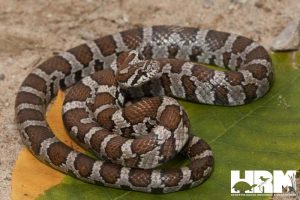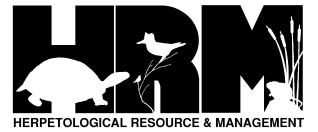Eastern Milk Snake
Overview:
Scientific Name: Lampropeltis triangulum triangulum
Size: 24 – 52” (adult total length)
Status: Locally common throughout most of its range.

Habitat:
Occupies a wide variety of habitats, from open woodlands, bogs, swamps, and woodland edges, to marshes, lake shorelines, old fields, pastures, suburban parks, and gardens.
Adult Coloration:
Gray or tan with a row of brown or reddish brown blotches edged in black. These markings alternate with one or two rows of smaller blotches on the sides. Often there is a light Y- or V-shaped mark on the back of the head. Belly white, cream, or pale yellow with irregular checkerboard pattern of black spots, which may fade to dark coloration with age. y.
Adult Characteristics:
Slender and medium sized with smooth scales and single anal plate.
Juvenile Characteristics:
More brightly colored than adults with black-bordered red or maroon blotches on pale gray dorsum. Range from 6.6 – 11” in length at hatching.
Scale Count:
Usually 21 scale rows at midbody
Species Confused With:
Water snakes have keeled scales and divided anal plates. Juveniles most often mistaken for juvenile Racers, Black Rat Snakes, and Fox Snakes, but these also have a divided anal plate
References:
- Amphibians and Reptiles of the Great Lakes Region by Jim Harding
- Harding, J.H. and J.A. Holman. 2006. Michigan Snakes. MSU Extension Ext. Bulletin E-2000,74 pp. [revised].
- Ruthven, A. G., H. B. T. Gaige, et al. 1912. The herpetology of Michigan, by Alexander B. Ruthven. Crystal Thompson and Helen Thompson; Memoranda towards a bibliography of the archaeology of Michigan, by Harlan I. Smith; prepared under the direction of Alexander G. Ruthven. Lansing, Mich., Wynkoop Hallenbeck Crawford, State Printers.
- Holman, J. A. 2012. The Amphibians and Reptiles of Michigan: A Quaternary and Recent Faunal Adventure. Detroit, Mich., Wayne State University Press.
- Conant, R., and Collins, J. T. 1998. Reptiles and Amphibians: Eastern, Central North America. Houghton Mifflin Harcourt Press.
